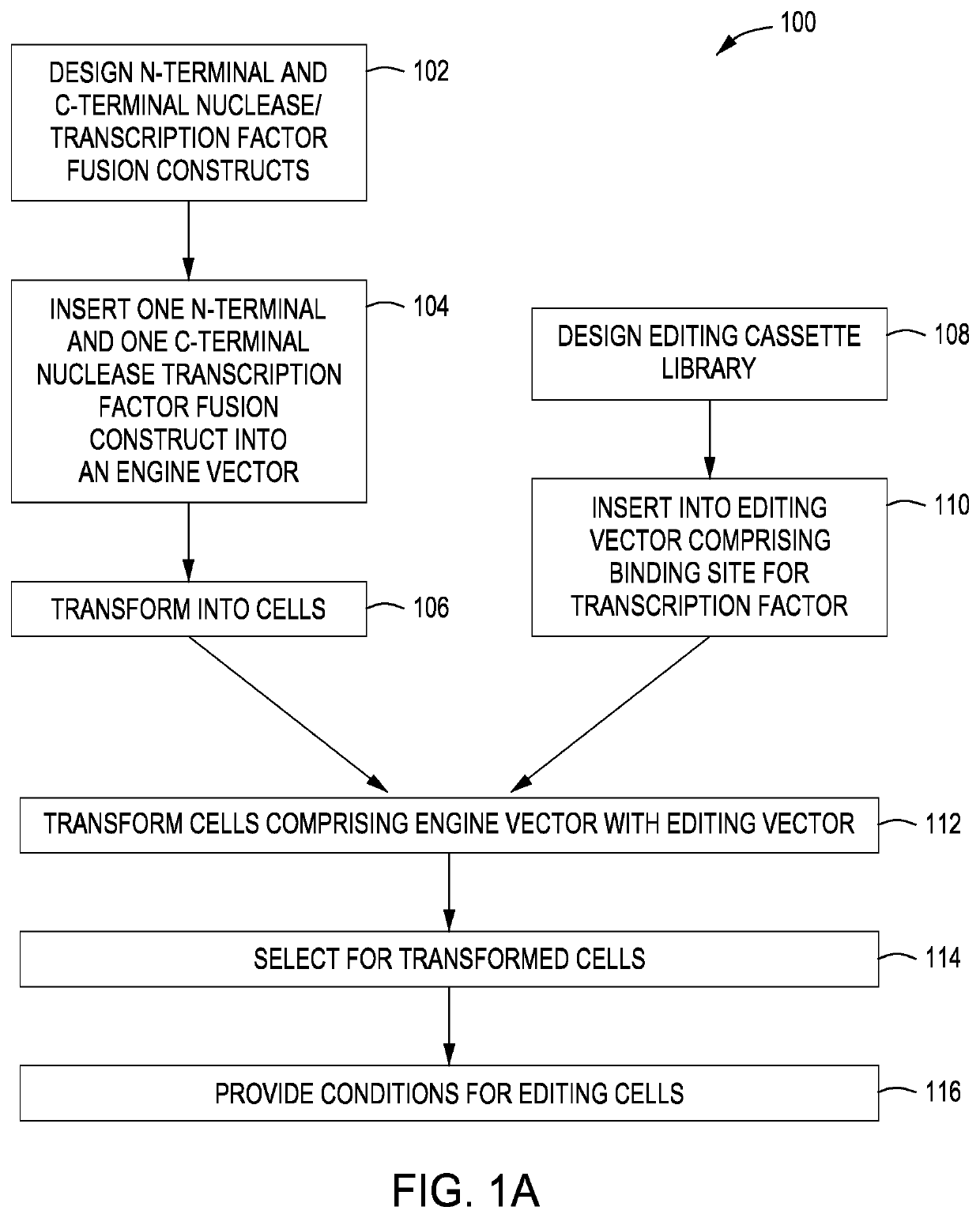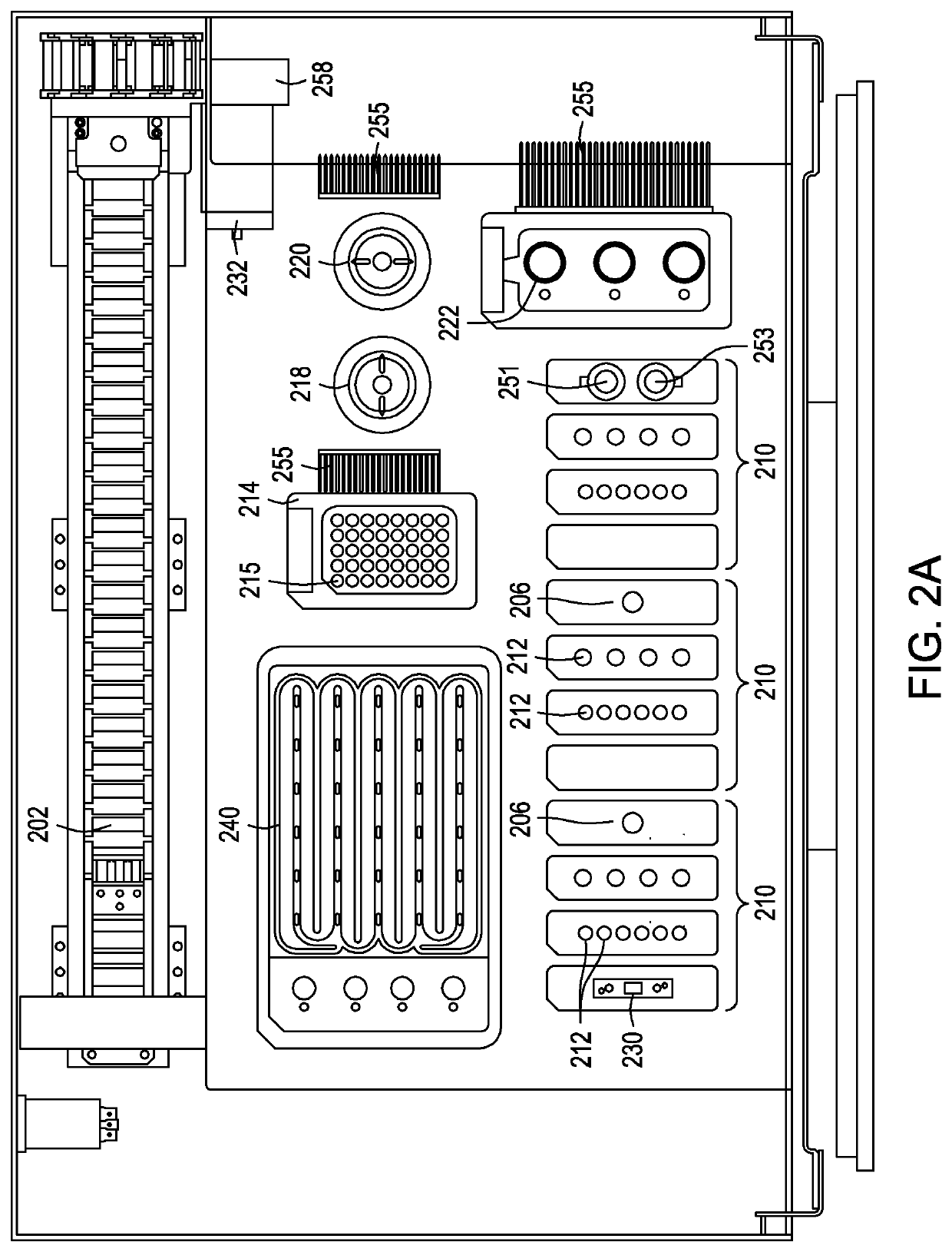Split crispr nuclease tethering system
- Summary
- Abstract
- Description
- Claims
- Application Information
AI Technical Summary
Benefits of technology
Problems solved by technology
Method used
Image
Examples
Example
Example I: dPCR Readout
[0152]
[0153]To measure cut activity of each split protein pair, 2 uL (quantity varies due to translation efficiency) from each in-vitro translation reaction are pooled together with 1 uL 300 nM gRNA and 4 uL with 1×NEB cut smart buffer (9 uL total). RNP is allowed to form for 20 minutes followed by addition of 1 uL of 100 nM target DNA (10 nM final). Digestion reactions are incubated at 37° C. for 2 hrs to allow complete digestion and then moved to −20° C. until qPCR reactions are ready. Following digestion, 1 μL of the digestion reaction is used as template for in a qPCR reaction (using SSO advanced kit from Bio Rad and following manufacturer's instructions) to determine the remaining un-cut or intact target DNA concentration. Split protein pairs that exhibit a lack of cleavage in the absence of donor DNA and >90% digestion of input material in the presence of the donor DNA are considered candidates for follow on characterization. Absolute quantification of t...
Example
Example II: Cy3 Cy5 Readout
[0154]FIG. 9A at top shows the split nuclease tethering system 184 comprising two transcription factor molecules 166 bound to a transcription factor binding site 156 on editing vector 152 and the N-terminal 160 and C-terminal 162 portions or regions of a nuclease bound to gRNA / donor DNA transcript 170, which is bound to target site 172 in a genome comprising a PAM site 174.
[0155]FIG. 9B depicts two exemplary vectors—one engine vector and one editing vector—comprising the elements needed for editing in E. coli using a split nuclease tethering system. At left is an engine vector comprising from 11 o-clock continuing clockwise, an inducible pL promoter driving transcription of a MAD7 C-terminal transcription factor construct and a MAD7 N-terminal transcription factor construct (in this example, an AraR transcription factor is used for both transcription factor constructs); a coding sequence for an AraC activator (e.g., the ligand which causes dimerization the...
PUM
 Login to view more
Login to view more Abstract
Description
Claims
Application Information
 Login to view more
Login to view more - R&D Engineer
- R&D Manager
- IP Professional
- Industry Leading Data Capabilities
- Powerful AI technology
- Patent DNA Extraction
Browse by: Latest US Patents, China's latest patents, Technical Efficacy Thesaurus, Application Domain, Technology Topic.
© 2024 PatSnap. All rights reserved.Legal|Privacy policy|Modern Slavery Act Transparency Statement|Sitemap



